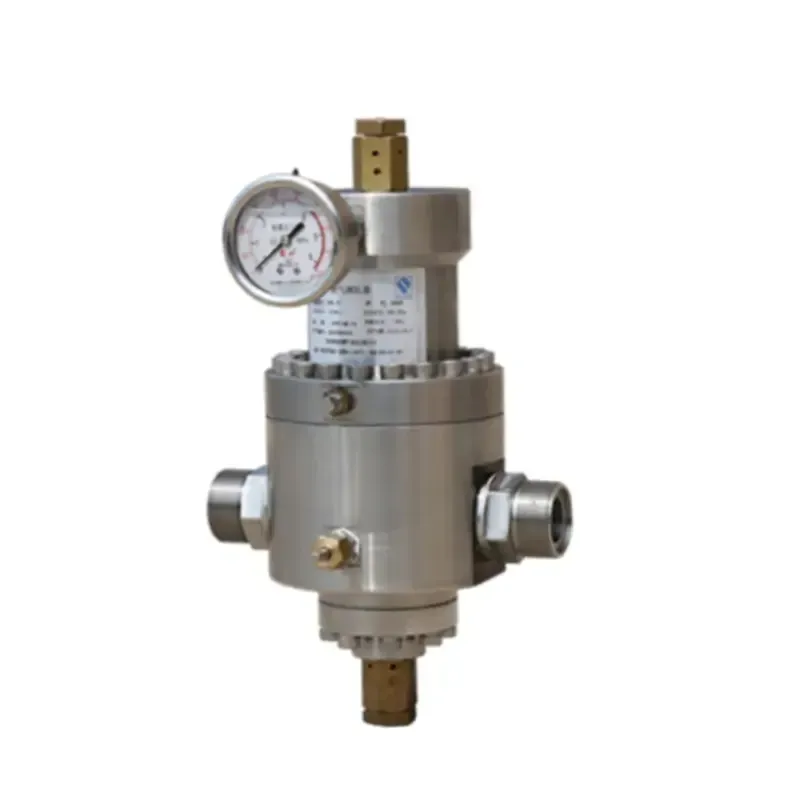
Oct . 21, 2024 22:26
Back to list
Ensuring Safety with Gas Pressure Relief Valves for Optimal Performance and Reliability
Understanding Gas Safety Relief Valves A Critical Component for Safe Operations
Gas safety relief valves are essential devices designed to protect industrial systems from excessive pressure, ensuring safe operations in various applications. These valves play a pivotal role in preventing catastrophic failures and maintaining the integrity of gas systems. In this article, we will explore the function, importance, and maintenance of gas safety relief valves.
What is a Gas Safety Relief Valve?
A gas safety relief valve is a pressure relief device that automatically releases gas from a system when the pressure exceeds a certain threshold. This excess pressure may arise from thermal expansion, system malfunction, or other unforeseen circumstances. The primary function of the relief valve is to prevent overpressure conditions that could result in equipment failure, leaks, or even explosions.
How Does it Work?
The operational principle of gas safety relief valves is relatively straightforward. Each valve is equipped with a spring-loaded mechanism that holds the valve in a closed position under normal operating conditions. When pressure levels rise above the designated set point, the pressure force overrides the spring force, causing the valve to open. This allows excess gas to escape safely into the atmosphere or to a designated venting system, thereby reducing the pressure within the system.
Once the pressure returns to safe levels, the spring forces the valve back into a closed position, ensuring that the system returns to a normal operational state. This automatic mechanism is crucial for maintaining system integrity and protecting personnel and equipment.
Importance of Gas Safety Relief Valves
The importance of gas safety relief valves cannot be overstated. They serve as a first line of defense against pressure-related hazards in various industries, including oil and gas, chemical processing, and power generation. A few critical reasons for their importance include
1. Safety The primary role of safety relief valves is to safeguard personnel and prevent accidents in the workplace. By controlling excess pressure, these valves minimize the risk of explosions or hazardous leaks.
2. Equipment Protection Overpressure can cause significant damage to equipment, leading to costly downtime and repairs. Relief valves help extend the life span of machinery by preventing overstrain.
gas safety relief valve

3. Regulatory Compliance Many industries operate under strict safety regulations that mandate the use of pressure relief devices. Compliance with these regulations is essential to avoid legal ramifications and ensure operational licenses.
4. Operational Efficiency By maintaining optimal pressure levels, safety relief valves contribute to the overall efficiency of gas systems. This leads to more stable operations and can result in cost savings over time.
Maintenance of Gas Safety Relief Valves
Like any mechanical device, gas safety relief valves require regular maintenance to function effectively. Neglecting maintenance can lead to valve malfunction, compromising safety. Here are some key maintenance practices to ensure reliability
1. Regular Inspections Conduct routine visual inspections to check for any signs of wear, corrosion, or leakage. This should be part of a broader preventive maintenance program.
2. Testing and Calibration It is essential to periodically test relief valves to ensure they open at the correct set pressure. Calibration should be done according to the manufacturer’s specifications and industry standards.
3. Cleaning Dirt and debris can interfere with the valve’s operation. Regular cleaning ensures that the valve components function freely and effectively.
4. Documentation Keeping comprehensive records of maintenance activities, including inspections, tests, and repairs, can be invaluable in identifying trends and ensuring compliance with regulations.
Conclusion
In conclusion, gas safety relief valves are indispensable components that contribute significantly to the safe and efficient operation of gas systems across various industries. By understanding their function, importance, and maintenance requirements, stakeholders can ensure that these critical devices operate reliably, protecting personnel, equipment, and the environment from potential hazards. Investing in proper maintenance and adherence to safety standards will not only enhance safety but also improve the overall efficiency and longevity of gas systems. As industry practices continue to evolve, the role of gas safety relief valves will remain a cornerstone of operational safety.
Latest news
-
Safety Valve Spring-Loaded Design Overpressure ProtectionNewsJul.25,2025
-
Precision Voltage Regulator AC5 Accuracy Grade PerformanceNewsJul.25,2025
-
Natural Gas Pressure Regulating Skid Industrial Pipeline ApplicationsNewsJul.25,2025
-
Natural Gas Filter Stainless Steel Mesh Element DesignNewsJul.25,2025
-
Gas Pressure Regulator Valve Direct-Acting Spring-Loaded DesignNewsJul.25,2025
-
Decompression Equipment Multi-Stage Heat Exchange System DesignNewsJul.25,2025

